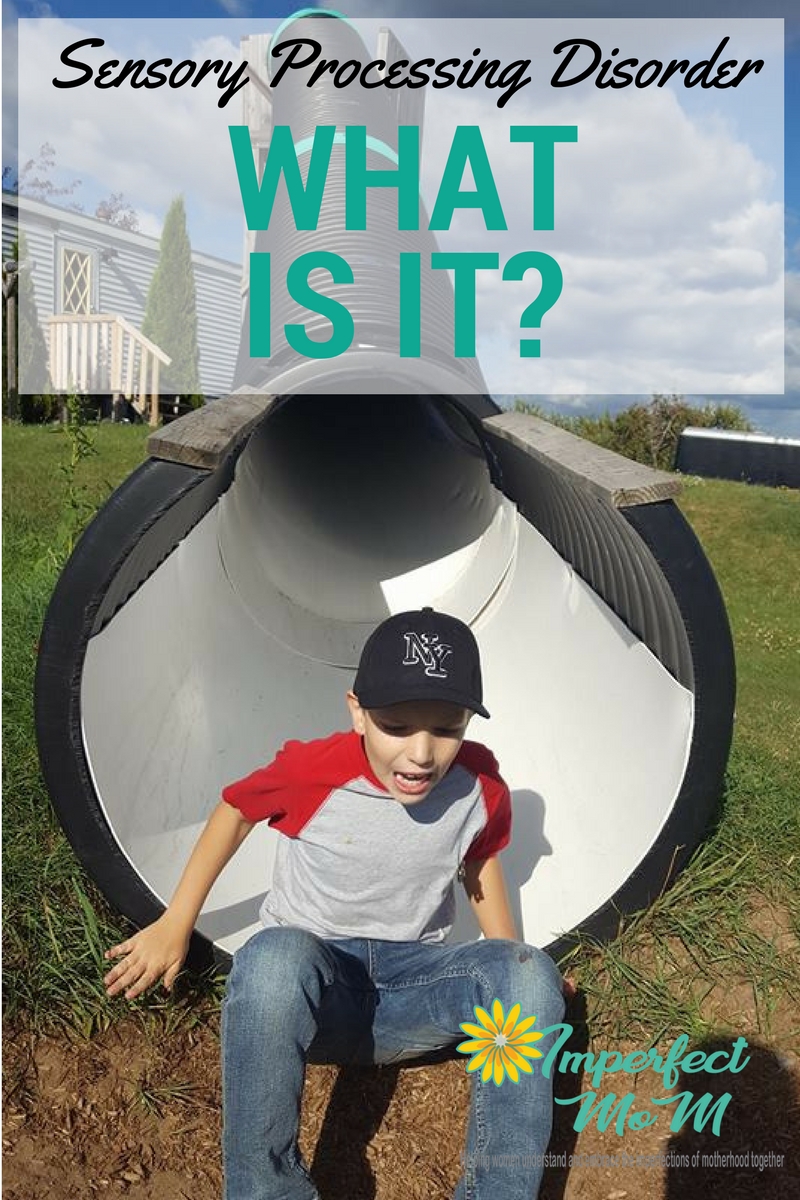Sensory processing disorder, what is it?
Sensory Processing Disorder, put simply is the way a brain interprets the sensations applied to our body.
Each of the seven senses; (see, hear, touch, taste, smell, proprioception, and vestibular stimulation) are felt in a typical body and the signal is sent to the brain to let it know a particular sensation was triggered.
In the case of a person with sensory processing disorder, the signal from the body to the brain is different, causing that person to over interpret or under interpret those sensations.
A person who has a sensory processing disorder has an exaggerated desire to seek and avoid particular stimulation in frequency or duration. This post contains affiliate links.

What does it look like?
To put this in real-life terms it can be explained like this…
Typical Sensory System
- Seeks Oral Stimulation ⇒ Eats raw (rather than steamed) carrots ⇒ sensory need satisfied
VS
Sensory Processing Disorder
- Seeks Oral Stimulation ⇒ Eats raw carrots ⇒ Sensory need temporarily satisfied
- Seeks More Oral Stimulation ⇒ Chews on pencil ⇒ Sensory need temporarily satisfied
- Seeks More Oral Stimulation⇒ Bites nails causing bleeding ⇒ Sensory need temporarily satisfied
The difference between a typical sensory processing system and a disordered system is the amount of stimulation needed or avoided.
The disordered system exaggerates the need or avoidance which results in behaviors (like biting nails excessively).
Once you are able to discover the things your child seeks and avoids, the resulting behaviors are much more easily managed.
What does it feel like?
Let’s look at this a little more in depth.
Take the sense of touch for example. A ladybug landing on your hand feels very different from a basketball landing in your hand.
Both are felt and interpreted as non-painful, one more intense than the other.
A child with sensory processing disorder, however, doesn’t just have a preference for one type of touch, but has an aversion to one and a deep need for the other.
Typical Sensory System
- Ladybug lands on a hand unexpectedly ⇒ child feels a tickling sensation
Sensory Processing Disorder
- Ladybug lands on a hand unexpectedly ⇒ child feels pain and screams
A child like this would most likely seek deep pressure touch, or any kind of firm, hard touch. This child would be one who;
- HATES tags on clothing
- doesn’t tolerate unexpected touch (someone brushes by him in passing, accidentally bumps into him, etc.)
- becomes aggressive or violent when he comes into contact with light touch
- seems soothed or calmed when wrapped tightly in a blanket (again, the firm pressure feels great on his body)
- loves to play rough (wrestling, jumping, etc.).
Sensory Processing Disorder: A “Sensory Child” in School
Just for a minute, let’s think about this child in school. This would be the child who;
- hits the kid next to him when his neighbor (who is sitting too close to him) accidentally bumps him with his elbow
- shoves the kid in back of him in line who wasn’t looking and accidentally walks into him on the way to the cafeteria
- is very active and aggressive at recess
When looking at him through a sensory processing lens, you see that he is simply trying to deal with the stimulation he is bombarded with at school.
He is trying to do the best he can to fill his sensory bucket with good things, but everything seems to be going against him.
It’s almost as if he has an itch that he can’t quite scratch.
Looking at it this way, it’s NO mystery that he is easily irritated, constantly distracted, and has a hard time in school.
Without the knowledge of sensory processing disorder, a spectator would see this child as “out of control,” “aggressive,” “temperamental,” and possibly label him with an unofficial diagnosis of ADHD.
“Isn’t there a medicine for that?” or “Why can’t you get him under control?” might be some of the questions you hear.
This is a very simplified explanation of sensory processing disorder.
This is not an official medical diagnosis as per the DSM (Diagnostic and Statistical Manual).
If you suspect your child’s learning and ability to thrive in his environment is affected by his sensory needs, here are some great resources I have found and used in my career (and with my own children);
Raising A Sensory Smart Child is a fantastic book that I have read which gives great insight into how to recognize and then address the specific sensory needs of your child. The website associated with this book can be found here.
The Out of Sync Child Has Fun has a lot of great activities to be used as resources to help kids function in an every-day environment – from the author of The Out of Sync Child.
For further reading about Sensory Processing Disorder:
The Out-of-Sync Child: Recognizing and Coping with Sensory Processing Differences Raising a Sensory Smart Child: The Definitive Handbook for Helping Your Child with Sensory Processing Issues
Raising a Sensory Smart Child: The Definitive Handbook for Helping Your Child with Sensory Processing Issues Understanding Your Child’s Sensory Signals: A Practical Daily Use Handbook for Parents and Teachers
Understanding Your Child’s Sensory Signals: A Practical Daily Use Handbook for Parents and Teachers The Out-of-Sync Child Has Fun, Revised Edition: Activities for Kids with Sensory Processing Disorder
The Out-of-Sync Child Has Fun, Revised Edition: Activities for Kids with Sensory Processing Disorder
About the Guest Author
This post originally appeared on WendyBertagnole.com and is reprinted with permission.
With an undergraduate degree in child development, and a master’s degree in special education, this foundation was a springboard for Wendy in helping kids and families to see the root of any challenges they face.




